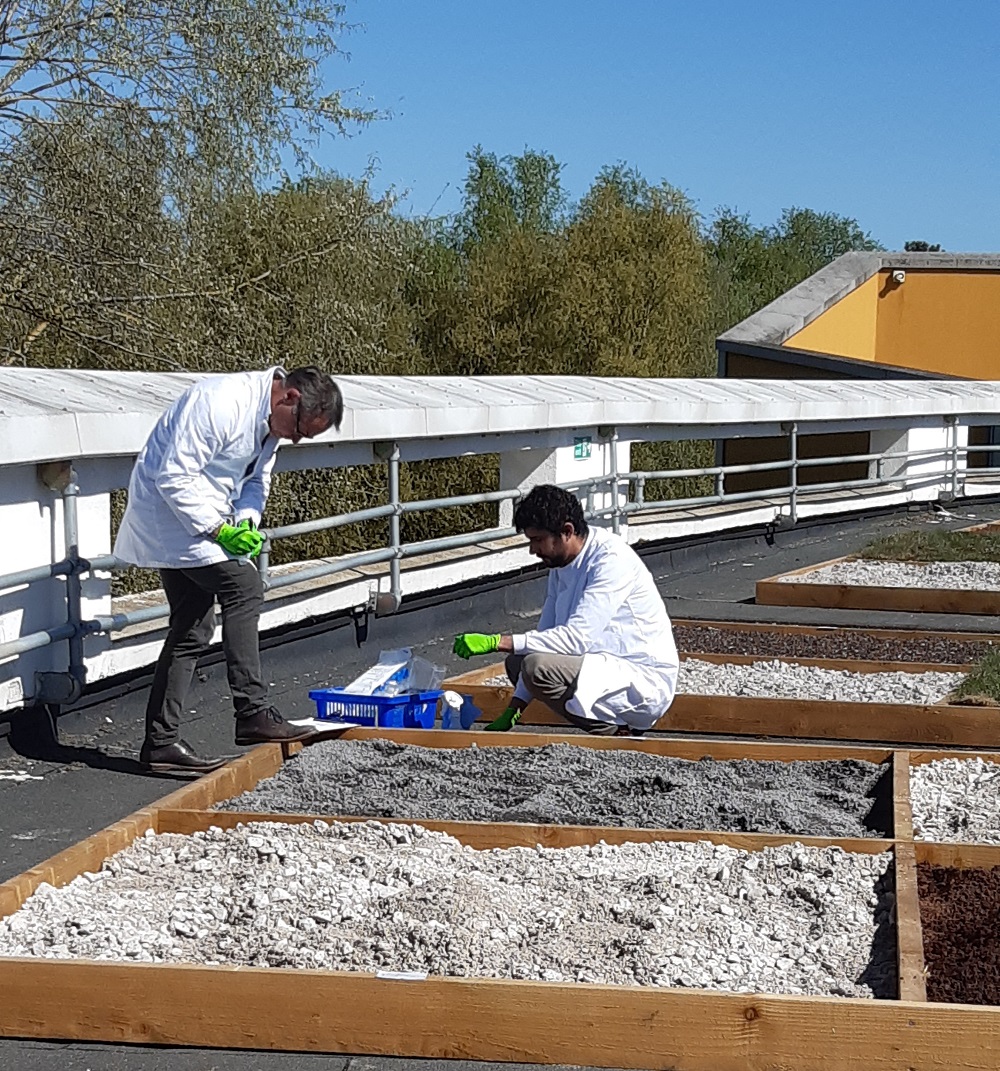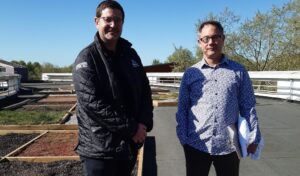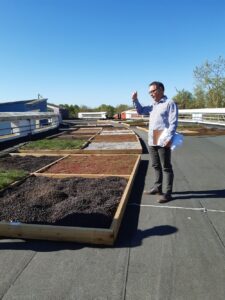OU News
News from The Open University
- Home
- OU brings environmental research to the rooftops
OU brings environmental research to the rooftops
Posted on • Science, Science, maths, computing and technology, University news

Work has commenced on The Open University’s first green roof research installation, thanks to a collaboration between scientists and a Milton Keynes-based Living Roof contractor.
Living Roof Live Lab, located on top of the Stuart Hall office building at the OU’s Walton Hall campus, features a vista of rectangular beds – known as rigs – containing different combinations of substrate and vegetation.
The project represents a significant stride towards sustainable urban development and is the result of Open Societal Challenges (OSC) funding through the Challenge Us! programme and a significant in-kind contribution from industry partners to establish the infrastructure.
Researchers at the OU’s STEM faculty are collaborating with the Green Roof Organisation (GRO), it’s members, and local green roof specialists Bridgman & Bridgman, to turn a traditional flat rooftop into a state-of-the-art green roof research lab.
Contributing to research on the benefits of green roofing

Living Roof contractor Chris Bridgman and the OU’s Dr Kadmiel Maseyk formed the collaboration.
The initial building blocks were put in place in early February and in April the seeds of the research were literally sown, as plug plants and seeds were planted. The rooftop rigs contain eight different combinations of substrates and vegetation, from crushed brick and limestone to sedum and wildflowers.
It’s hoped that this initiative will contribute to crucial research on the ecological and urban benefits of green roofing technologies in the United Kingdom.
Project lead Dr Kadmiel Maseyk, is an expert in environmental physiology and carbon cycle science. He explained:
“This is a really exciting development for the OU and I’m looking forward to seeing the platform take shape. As well as being a nice rooftop green space, it will provide insights into how green roofs can mitigate urban heat, reduce water runoff, enhance biodiversity, and improve energy efficiency in buildings.
“We need to look at the UK climate with respect to green roof performance, the data we have currently is largely based on North America and Europe, where vegetation and climate differs.
“Creating a green space on a rooftop is an ideal opportunity; it can keep a building warmer in winter and cooler in summer. They also cost very little in terms of what they are going to create, in terms of biodiversity.”
Milton Keynes is in the top two for cities outside of London with the most amount of intensive green roofs (meaning rooftop gardens, designed for people and nature).
Chris Bridgman, managing partner and green roof specialist, said:
“These roofs are really important, for biodiversity and to help tackle climate change. In participating in this research project, we’re representing not just ourselves but GRO, the UK green roof trade association.
“We’ve come together with the university to look at all the green roofs and actually capture some really meaningful data that can be used to lobby government and ensure that more rooftops are rolled out across the country and used efficiently for both people and nature.
“We’d love to see all flat roofs in MK, that can become green. It’s a nature-based solution to the biodiversity crisis.”
Dr Maseyk and team will work closely with OU’s estates and sustainability teams to integrate findings into broader initiatives aimed at making the OU’s campus a model of environmental stewardship.

The rooftop rigs contain eight different combinations of substrates and vegetation.
Designed for varied plant and substrate testing, the roof materials will be tested for durability, water retention, and their ability to reduce local temperatures.
Tracey Ho, Energy Manager, Estates said:
“The Living Roof Live Lab at Stuart Hall is a brilliant blend of education, research, and real-world sustainability in action. Green roofs are visually appealing and offer ecological and urban benefits to our campus. The fact that this project will generate UK-specific data is a huge plus.
“From an estates perspective, having local insights means better informed design in terms of plant species selection, insulation performance, water retention, heat mitigation and maintenance strategies, potentially influencing our future infrastructure policies and building designs.”
This research will continue for the next four years. You can read more about the research project here